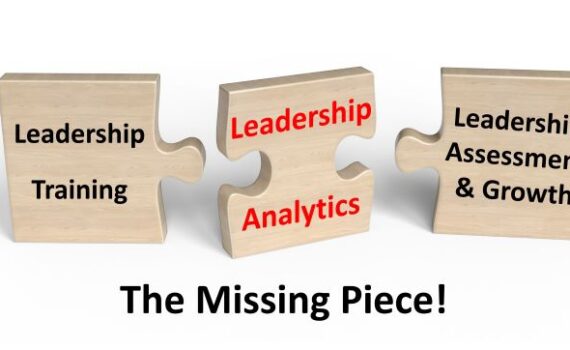Leadership Analytics 101
Category : Analytics Leadership
Leadership analytics is critical to an organization’s continued growth and success. It can be the difference between keeping and losing your best leaders, the difference between identifying and missing high potential hires, and the difference between promoting people based on leadership potential or based on prior functional success. Each of these could have dire consequences for an organization.
Leadership analytics is very similar to the customer analytics work I performed in the 1990s, where I helped Fortune 500 companies develop and implement customer management solutions. These solutions usually involved predicting future customer behavior based on their prior purchase history. The goals were to help the organization identify and retain their most valued customers, identify and attract high potential prospects as well as identify upsell and cross sell opportunities for customers. Customer analytics is very transactional in nature.

The goals of leadership analytics are very similar in that it is also behavior-based with its focus on their potential for leadership and their practice of leadership. It is not transactional in nature and does not assess a person’s knowledge of leadership, but measures how committed they are to leadership behaviors derived from decades of research into the traits of effective leadership.
Therefore, the purpose of leadership analytics is to help organizations identify and retain their best leaders, identify and attract high potential leaders as well as identify the best leader to take on new opportunities. Let’s look at each one of these goals in detail.
Identify and Retain Best Leaders. Identifying the best leaders in an organization is the most important outcome of leadership analytics. It should be a priority of every organization to retain their best leaders, just like it should be a priority to retain their best customers. This is not an area that should be left up to opinions from interviews, which could include a number of biases. It requires a repeatable, unbiased instrument that will produce consistent results. Questions to be answered should include:
- What is the leader’s potential for leadership?
- How well does the leader practice leadership?
- Is the leader situationally aware?
- Is the leader emotionally intelligent?
This is a good start, but analysis without context provides minimum value. In customer analytics, we would segment customers based on their value to the organization. The Best customers were the ones the organization should do everything possible to keep. The Good customers were helping to pay the bills and organizations should incent them to become better customers. The Worst customers were the ones that probably were unprofitable relationships and should be encouraged to go to a competitor.
In Leadership Analytics, it is tempting to believe that a person with a good score could become a great leader. They could be, but when they are compared to others, they might only be an average leader. Once the best leaders are segmented and ranked, the organization should implement programs to promote, engage and retain them. This is especially important now during the ‘great migration.’ Organizations should do everything they can to retain their best leaders before they are ready to leave. This is something Leadership Analytics can help make happen.
Identify and Attract High Potential Leaders. With an unbiased and quantifiable assessment of the best leaders in your organization, this information can be applied in the assessment of new hires. Once hired, they can be given the same assessment to determine if the interview assessment matches the instrument results, which could lead to a different interviewing process or questions to better glean these insights. Once an organization has a full understanding of the leadership attributes most important to their environment, they can search for people in the hiring pool who possess those same or similar attributes.
Identify the Best Leader for New Opportunities. Similarly, to upsell and cross sell opportunities, once a leader’s abilities have been assessed, this information can be used to better match leaders with future opportunities. For instance, if a project or role requires someone with a lot of vision or risk-taking, an organization can explore their pool of leaders to find someone who best matches the needs of the position.
This was very relevant when I was asked by Microsoft to architect their first global analytics department several years ago. Part of the organization chart dynamics was the acceptance of the fact that, 1) not everyone should be promoted to leadership, and 2) not everyone wants to be a leader or manage other people. For those employees that are valuable, but don’t want to lead other people, the organization should implement programs to keep their work engaging and retain that employee.
The benefits of using Leadership Analytics are numerous. We’ve touched on many already, but it can supplement any leadership development program and be utilized to assess individuals, team dynamics and organization level performance. Executive and leadership coaches can utilize it to identify specific areas for their clients to work on to become better leaders. Recruiters could utilize it to provide an added edge to make their candidates stand out from the rest being submitted. Investors could even utilize it to assess the strength of the leadership team at the organization they are investing in.
Now, more than ever, effective leadership is needed throughout all institutions. The means of providing unbiased, quantifiable and repeatable assessments of leaders is available and should be embraced by all organizations. As the great data scientist, W. Edwards Deming stated, “Without data you’re just another person with an opinion.” Leadership Analytics has significant value and can provide that data.
